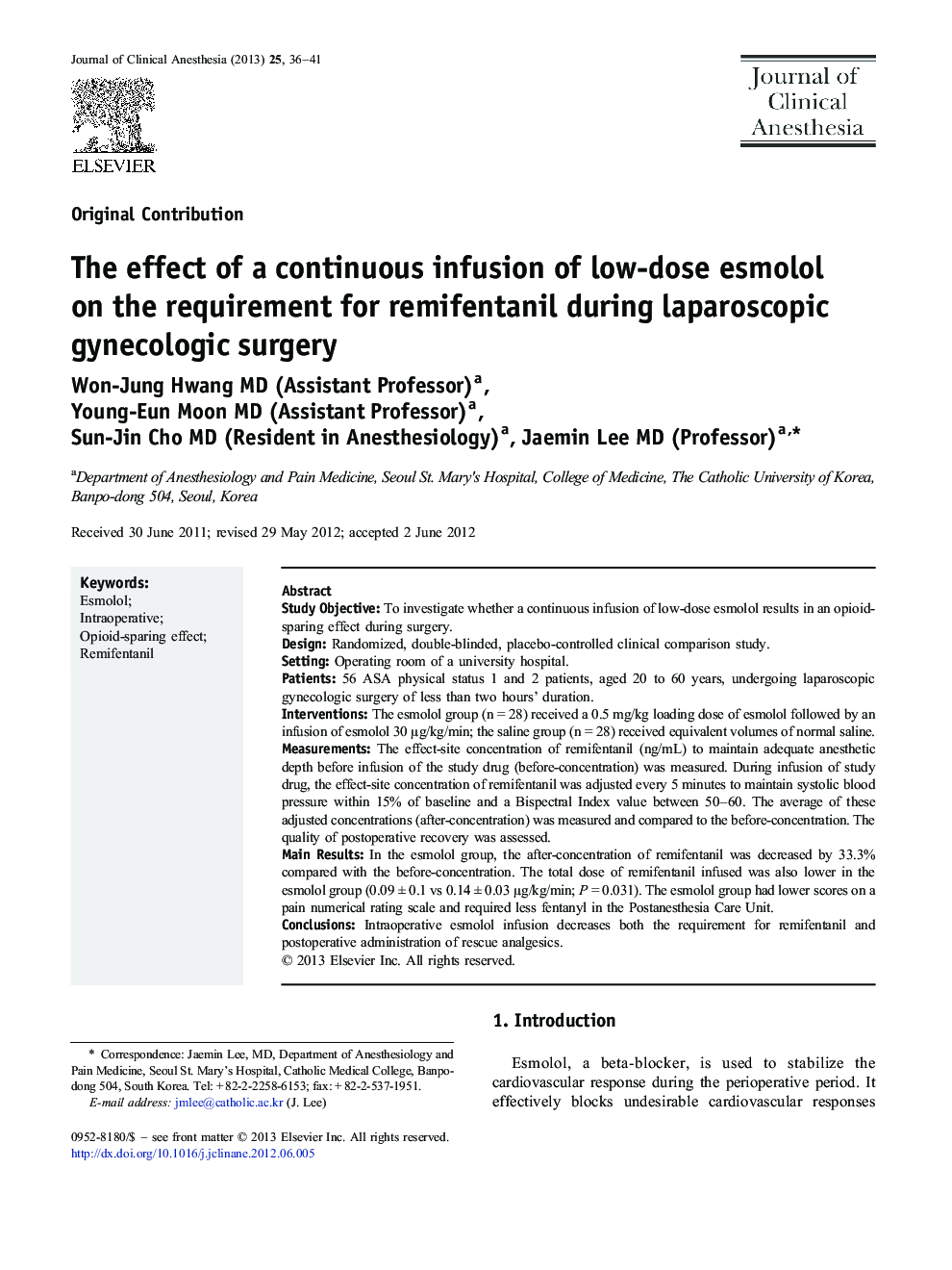| Article ID | Journal | Published Year | Pages | File Type |
|---|---|---|---|---|
| 2762545 | Journal of Clinical Anesthesia | 2013 | 6 Pages |
Study ObjectiveTo investigate whether a continuous infusion of low-dose esmolol results in an opioid-sparing effect during surgery.DesignRandomized, double-blinded, placebo-controlled clinical comparison study.SettingOperating room of a university hospital.Patients56 ASA physical status 1 and 2 patients, aged 20 to 60 years, undergoing laparoscopic gynecologic surgery of less than two hours’ duration.InterventionsThe esmolol group (n = 28) received a 0.5 mg/kg loading dose of esmolol followed by an infusion of esmolol 30 μg/kg/min; the saline group (n = 28) received equivalent volumes of normal saline.MeasurementsThe effect-site concentration of remifentanil (ng/mL) to maintain adequate anesthetic depth before infusion of the study drug (before-concentration) was measured. During infusion of study drug, the effect-site concentration of remifentanil was adjusted every 5 minutes to maintain systolic blood pressure within 15% of baseline and a Bispectral Index value between 50–60. The average of these adjusted concentrations (after-concentration) was measured and compared to the before-concentration. The quality of postoperative recovery was assessed.Main ResultsIn the esmolol group, the after-concentration of remifentanil was decreased by 33.3% compared with the before-concentration. The total dose of remifentanil infused was also lower in the esmolol group (0.09 ± 0.1 vs 0.14 ± 0.03 μg/kg/min; P = 0.031). The esmolol group had lower scores on a pain numerical rating scale and required less fentanyl in the Postanesthesia Care Unit.ConclusionsIntraoperative esmolol infusion decreases both the requirement for remifentanil and postoperative administration of rescue analgesics.
